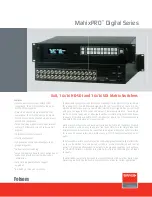
4-2 Speed Compensation
Standard Speed Comp
Example
Figure 22 illustrates a simple carton gluing application. A conveyor moves cartons under
a glue gun which releases glue onto the flaps. The conveyor is connected through a
timing chain and sprocket to a transducer which rotates one revolution for each carton
that passes under the gun.
As the transducer dial shows, SHAFT POSITION has been programmed so that the
leading edge of the box passes under the gun at 110° and the trailing edge at 360°.
Glue begins flowing ten msec after the gun is energized, and it stops flowing ten msec
after the gun is de-energized. Once the glue leaves the nozzle, it requires another five
msec to travel to the carton. Combining the glue gun response time with the travel time
results in a system response time of 15 msec, regardless of line speed.
At very slow, or essentially zero speed, the gun would be energized at a transducer
position of 110° and de-energized at 360°. As the line speed increases, however, the gun
needs to be energized before 110° to allow the glue to hit the carton in the correct spot.
The faster the line speed, the earlier in the transducer cycle the gun must be triggered.
Calculation
To calculate the amount of speed compensation required, use the following relationships
between the transducer’s RPM (revolutions per minute) and degrees of rotation:
1 RPM = 360°/min = 6°/sec = 0.006°/msec,
RPM x 0.006 = deg/msec,
thus:
@ 100 RPM, the transducer will rotate 0.6°/msec
@ 1000 RPM, the transducer will rotate 6.0°/msec
The gluing system requires 15 msec from the time the gun is energized to the time the
glue hits the carton. At 100 RPM, the transducer will rotate 0.6°/msec. Therefore, in the
15 msec response time, the transducer will rotate (15 msec x 0.6°), or 9°. This means the
glue gun must be energized at 101°, which is 9° before the box arrives under the gun,
and de-energized at 351°. At 1000 RPM, the transducer will rotate (15 msec x 6°), or
90° during the response time, and the gun must be energized at 20° and de-energized
at 270°. These values are visually represented in Figure 23.
Figure 22—Simple Application Using Speed Compensation
Содержание Plus PS-6144 Series
Страница 3: ......
Страница 4: ......
Страница 12: ...2 2 Installation Wiring Mounting Dimensions Figure 4 Mounting Dimensions ...
Страница 76: ...6 2 Communications PLµSNET II Program cont d Sample ASCII Program Copied from PS 6144 Using PLµSNET II ...
Страница 114: ......
Страница 115: ......
Страница 116: ...800 228 5487 U S A and Canada Web Site www electrocam com email ecam electrocam com PRINTED IN U S A 256 9 14 ...
















































